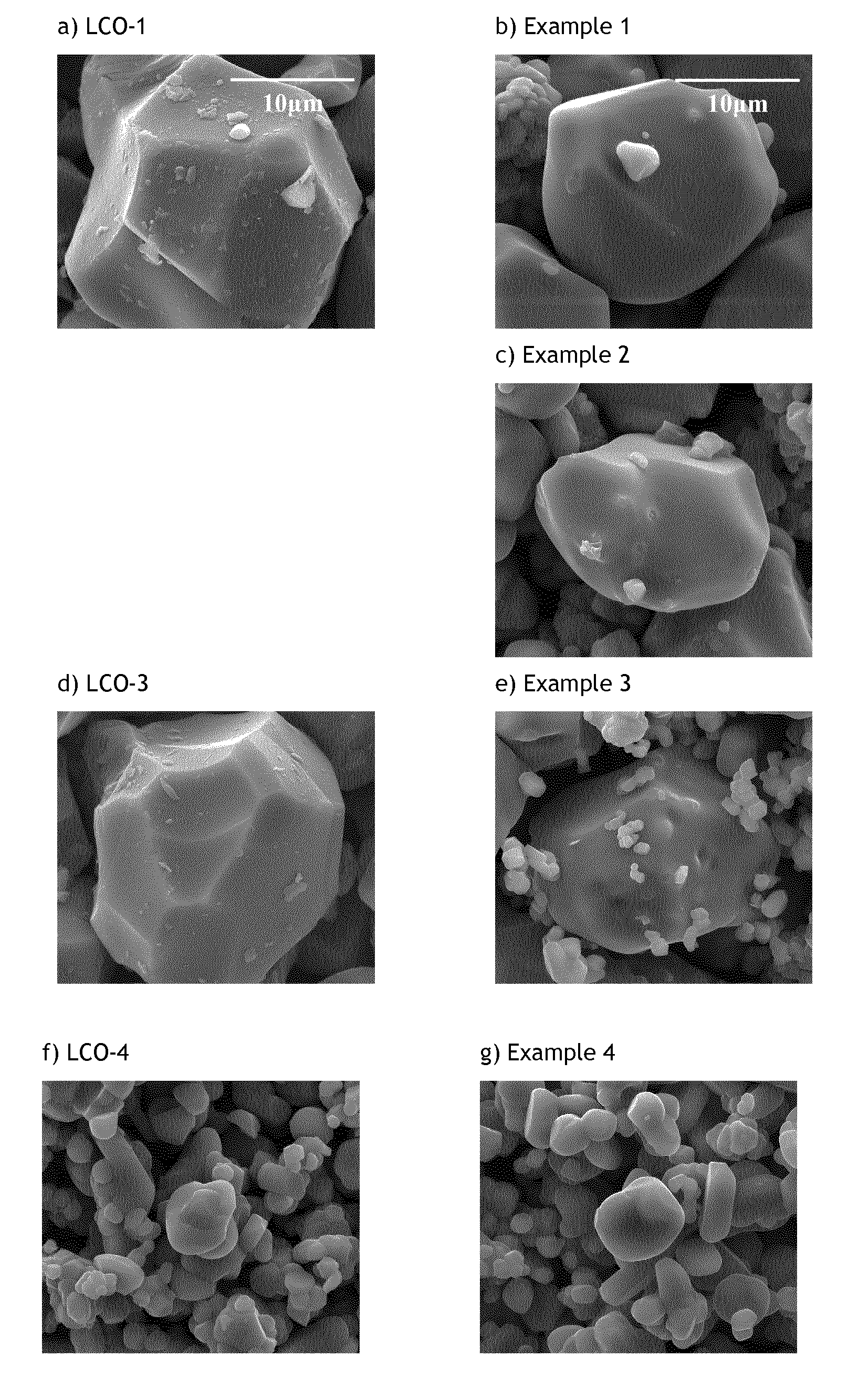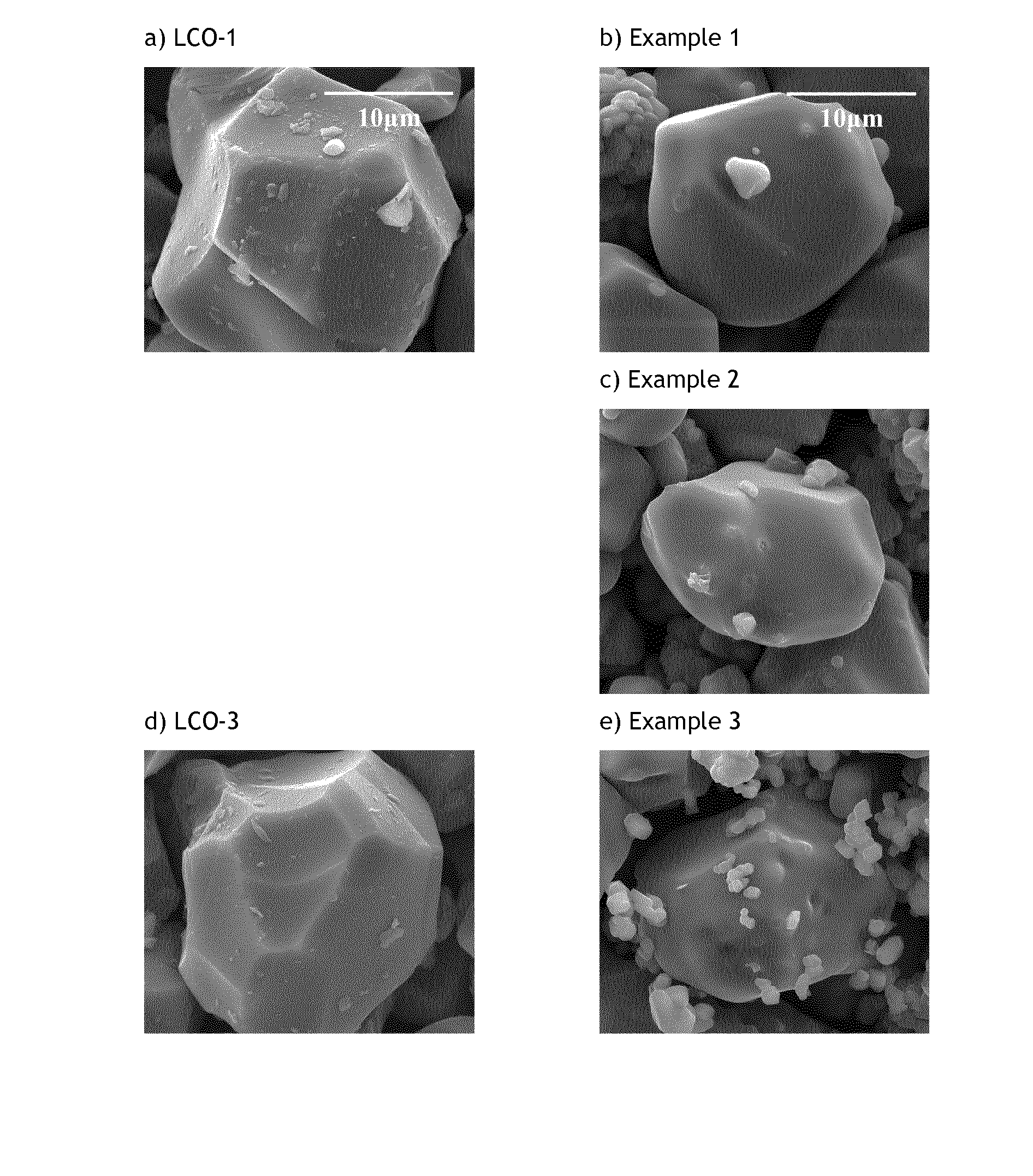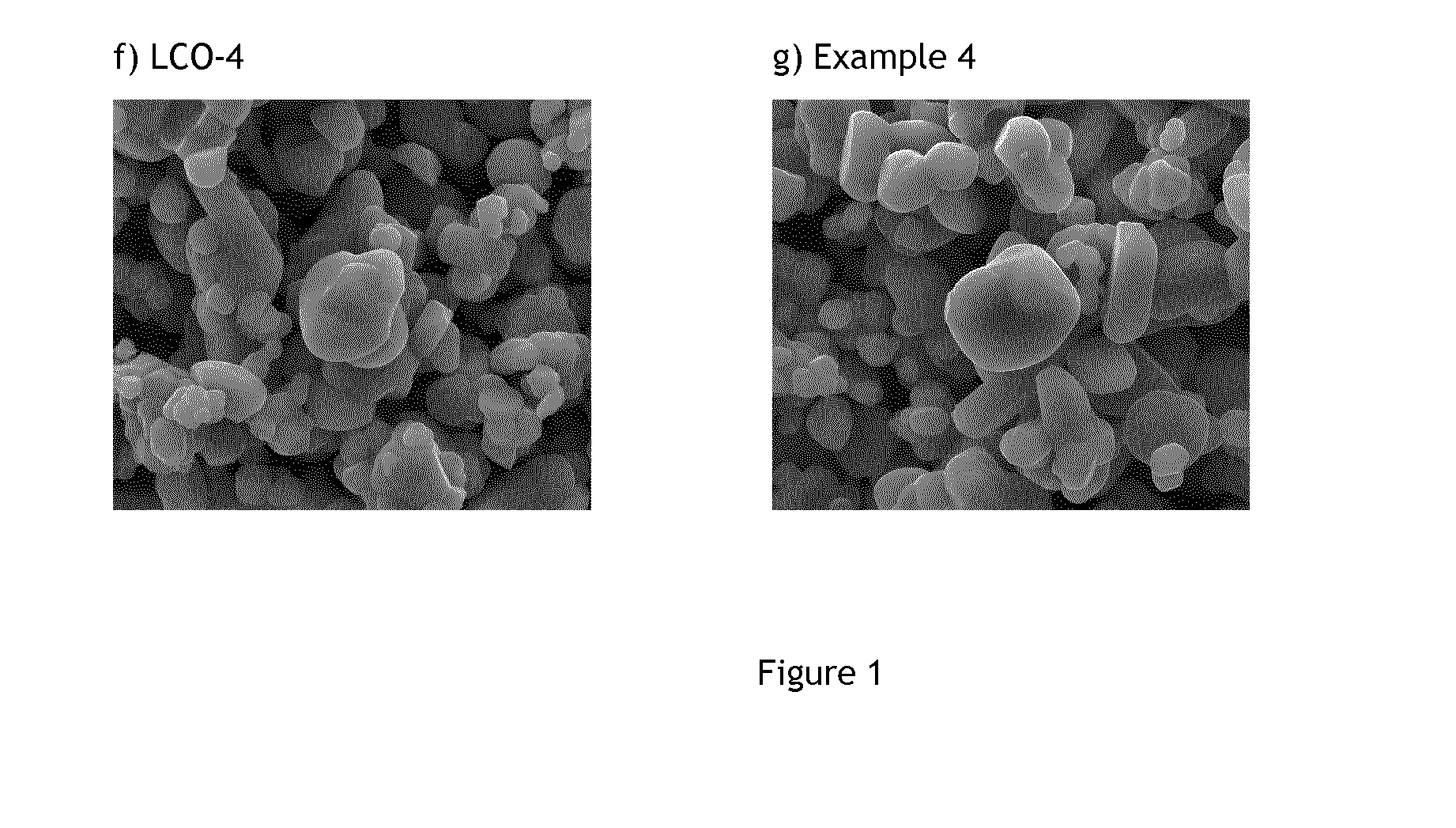Lithium Metal Oxide Particles Coated with a Mixture of the Elements of the Core Material and One or More Metal Oxides
a technology of lithium metal oxide and core material, applied in the direction of cobalt compounds, metal/alloy conductors, cell components, etc., can solve the problems of poor safety, limited industrial applicability of these two approaches, and cathode degradation linked with electrolyte decomposition
- Summary
- Abstract
- Description
- Claims
- Application Information
AI Technical Summary
Benefits of technology
Problems solved by technology
Method used
Image
Examples
examples 1-4
Preparation of Li:Co Stoichiometrically-Controlled Lithium Cobalt Based Oxides
[0107]These examples demonstrate that Li:Co stoichiometrically-controlled doped lithium cobalt based oxides featuring a 7Li MAS NMR spectrum characterized by a single Li contribution centered around −0.5 ppm and an increased T1 spin-lattice relaxation time is also characterized by a high voltage cycling stability. The improved stability, single contribution 7Li MAS NMR spectrum and longer T1 are obtained by optimizing lithium to metal ratio.
example 1
[0108]The characterization of Examples 1 and 2 will demonstrate that Li-stoichiometry controlled LiCoO2-based cathode materials, i.e. having a Li / Co ratio of 1.00±0.01, comprising a core where Li atoms occupy a single site surrounded by trivalent diamagnetic metals, and having an electron insulating surface comprising the elements of the core material (Li, Co) and inorganic metal oxides comprising Mg and Ti show improved features for high voltage applications.
[0109]Preparation of LCO-1: 0.25 mol % titanium and 0.5 mol % magnesium doped Co(OH)2 as precursor for LiCoO2 is prepared in a pilot line according to the process explained in WO2010-139404. A state of the art titanium and magnesium doped LiCoO2 (noted LCO-1) is obtained by means of a standard high temperature solid state synthesis (=the first firing step) by mixing the precursor with Li2CO3. Typical Li:Co molar ratio used in the Li2CO3-doped Co(OH)2 blend is 1.06 to 1.12. The average particle size of LCO-1 is 20 μm. The final ...
example 2
[0111]Preparation of Example 2 (noted Ex2): 94 mol % of LCO-1 and 6 mol % of 0.25 mol % Ti and 0.5 mol % Mg doped Co(OH)2; corresponding to respectively 94.28 wt. % and 5.72 wt. %; are mixed in order to target a final Li:Co mol ratio of 0.990±0.002. The homogeneous mixture is placed in an alumina crucible and heated at 925° C. for 12 hours under constant air flow. After cooling, the resulting powder (Ex2) is sieved and characterized. The average particle size of Ex2 is found to be 20 μm.
PUM
 Login to View More
Login to View More Abstract
Description
Claims
Application Information
 Login to View More
Login to View More - R&D
- Intellectual Property
- Life Sciences
- Materials
- Tech Scout
- Unparalleled Data Quality
- Higher Quality Content
- 60% Fewer Hallucinations
Browse by: Latest US Patents, China's latest patents, Technical Efficacy Thesaurus, Application Domain, Technology Topic, Popular Technical Reports.
© 2025 PatSnap. All rights reserved.Legal|Privacy policy|Modern Slavery Act Transparency Statement|Sitemap|About US| Contact US: help@patsnap.com



